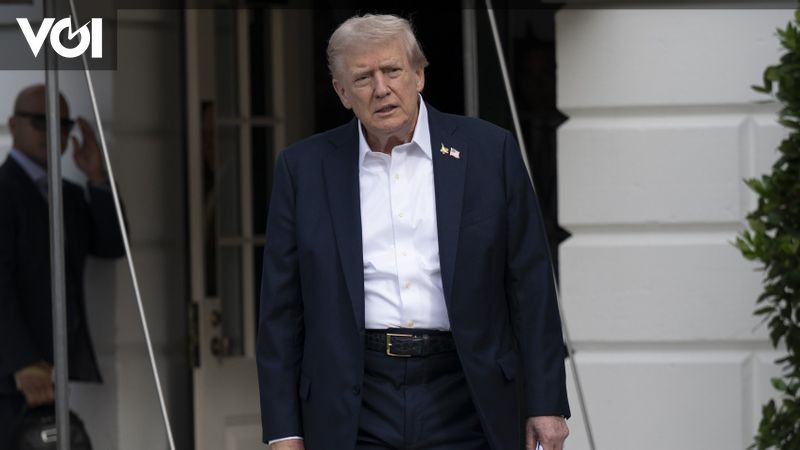JAKARTA The administration of the US President, Donald Trump, is considering implementing tariffs on imported electronic devices based on the number of chips in it. This was said by three sources who knew about the plan. This step aims to encourage companies to move production to the United States.
According to previously unreported and changeable plans, the US Department of Commerce will charge a tariff of a percentage of the estimated value of the chip content in the product. The Commerce Department has not yet responded to requests for comment.
America should not rely on foreign imports for semiconductor products that are critical to our national and economic security. The Trump administration has implemented a detailed and diverse approach to returning critical manufacturing to the United States through tariffs, tax cuts, deregulation, and energy abundances, “said White House spokesman Kush Desai, quoted by VOI from Reuters.
If implemented, the plan shows that the Trump administration is working on targeting various consumer products, from brushes to laptops, which have the potential to increase inflation while encouraging increased manufacturing in the US.
“The plan could increase the price of consumer goods as the US faces inflation issues, with inflation levels clearly above the Federal Reserve target of 2% and continuing to rise,” said Michael Strain, a conservative economist from the American Enterprise Institute. Domestic production goods are also likely to become more expensive as new tariffs on key components are needed to make these products, he added.
US President Donald Trump has implemented various tariffs to support American manufacturing, including an announcement on Thursday, September 25 about a new import rate that includes 100% duty for branded drugs and a 25% tariff for heavy-duty trucks, sparking new trade uncertainty after a relatively calm period.
In April, the Trump administration announced an investigation into imports of pharmaceuticals and semiconductors as part of efforts to impose tariffs, citing a large dependence on foreign production as a threat to national security.
However, there are still questions about the type of chip-based product that will be subject to tariffs, tariffs, and whether any country, product, or company will be excluded. Trump said in August that the US would charge around 100% on semiconductor imports, but excluded companies producing in the US or having committed to doing so.
The largest chipmakers outside the US include Taiwan Semiconductor Manufacturing Co (TSMC) and Samsung Electronics from South Korea. One source said that the Commerce Department was considering a 25% tariff for chip-related content on imported devices, at a 15% rate for electronics from Japan and the European Union, although these figures were still transient.
The source also said that the Commerce Department is considering waivers of tariffs based on investments in manufacturing facilities in the US, but only if the company moves half of its production to the US. However, it is not clear how this mechanism will run or whether it will continue.
Previously, the Commerce Department had proposed excluding chipmakers from tariffs to avoid rising semiconductor production costs in the US, which could undermine Trump’s goal of returning manufacturing to within the country. However, sources said the White House was unhappy with the exception, given Trump’s dislike for exemptions in general.
The English, Chinese, Japanese, Arabic, and French versions are automatically generated by the AI. So there may still be inaccuracies in translating, please always see Indonesian as our main language.
(system supported by DigitalSiber.id)
